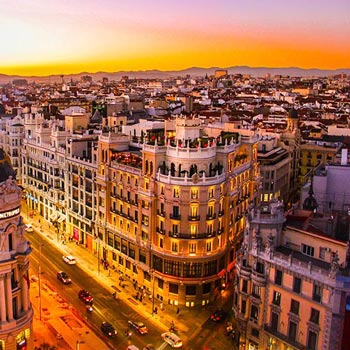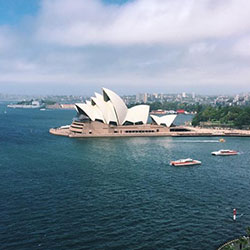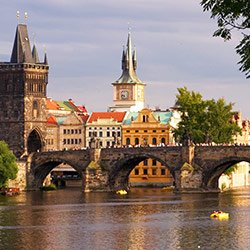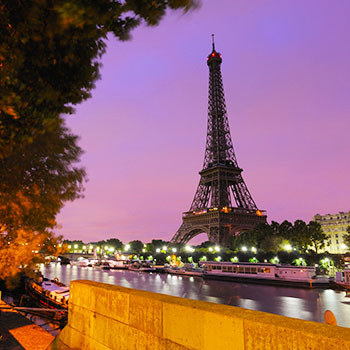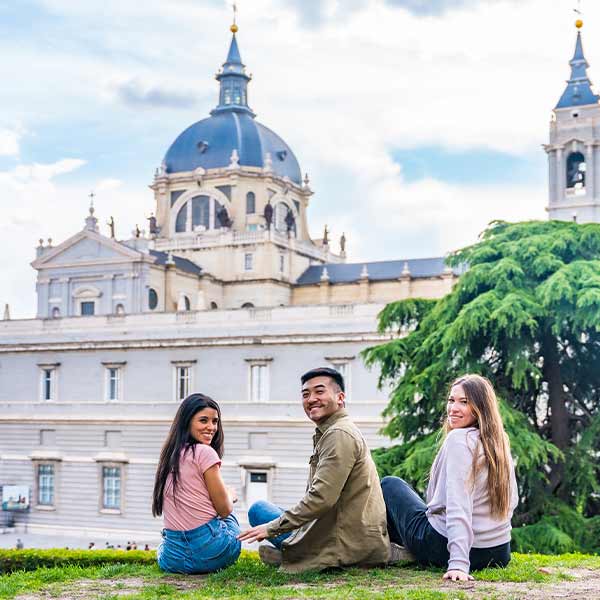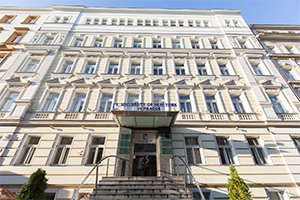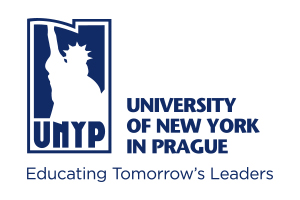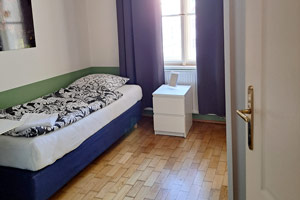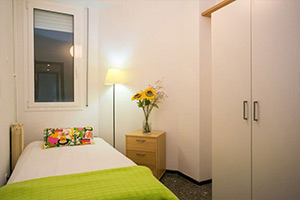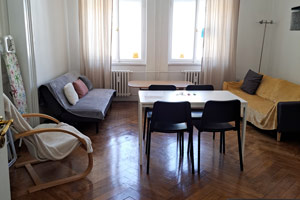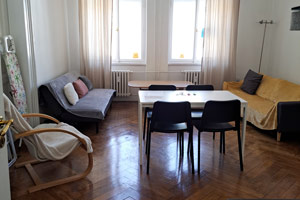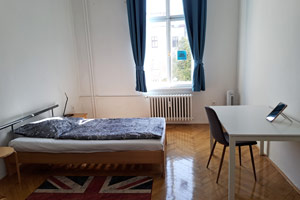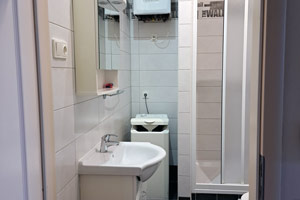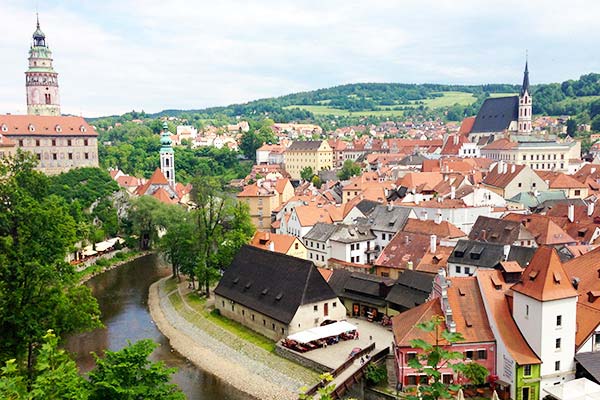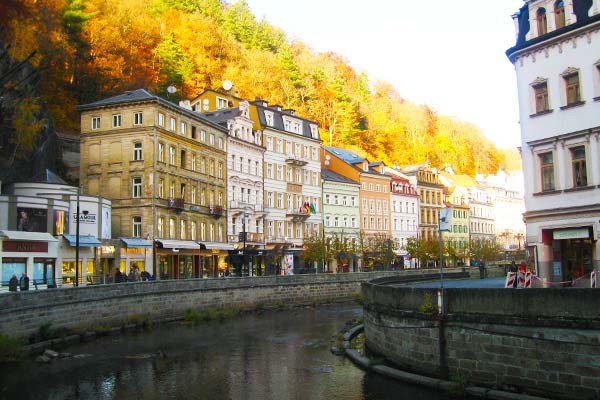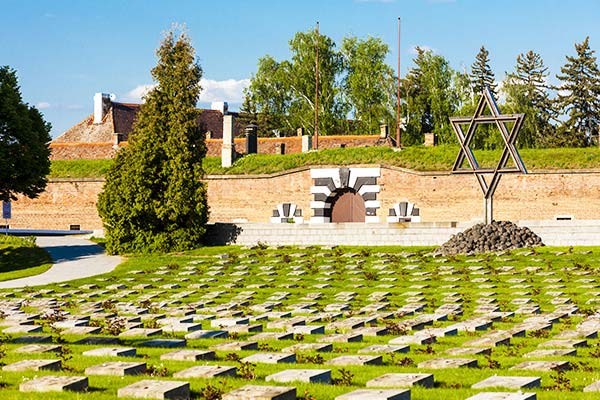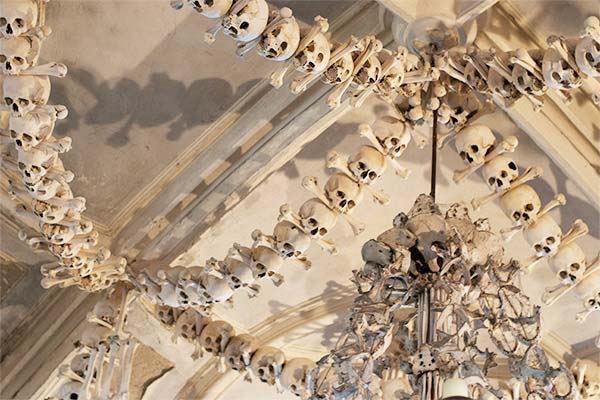
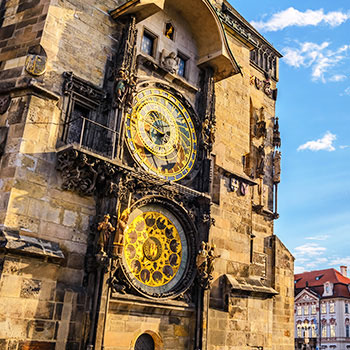
About the Program
Delve into international relations and political theory in this interdisciplinary program. Gain an understanding of how political, cultural, and economic relations influence the global community and the role the Czech Republic plays in the world. There are more than 100 courses, all taught in English, across a range of disciplines available through the CEA CAPA Prague Center and one of our local partner institutions - Anglo-American University (AAU) or University of New York in Prague (UNYP). Many courses incorporate an active learning style that takes you out of the classroom and into the city, lending real-world context to lessons learned in the classroom.
Program Notes
Beginning with the Spring 2025 semester, all course options with AAU and UNYP will remain similar to past terms, but the program will be found under a different name. This program will remain open through the end of the Fall 2024 application cycle, but to browse available options for the Spring 2025 semester and beyond, please click here.
Requirements
Overview
Prague
1/24/24 - 5/10/24
$17,895
12 - 15
Deadlines
Closed
11/15/23
Requirements
Eligibility
1 Year of College completed prior to program start
All Levels
2.5
Some courses may have prerequisites.
Where You'll Study
Credits
Program Structure & Courses
- By selecting the CEA CAPA & UNYP option, you’ll enroll in 2-3 CEA CAPA courses and 2 UNYP courses.
- By selecting the CEA CAPA & AAU option, you’ll enroll in 1-2 CEA CAPA courses and 3 AAU courses.
AAU courses meet for 42 contact hours and count for 3 credits. CEA CAPA & UNYP courses meet for 45 contact hours and count for 3 credits. Students may earn 12–15 credits (up to 210-225 contact hours) credits per semester. Classes meet at various times, Monday through Friday. Active learning components required by your courses may be scheduled for Fridays.
Prior to departure, you will select your preferred courses. You will be enrolled into courses based on availability and further changes can be made during the add/drop period at the beginning of the semester. It is in your best interest to have multiple alternative courses approved by your home university prior to your departure due to course availabilities. Please consult with your academic advisor at your home university on credit pre-approval guidelines.
All Levels Course Structure
Courses
The following courses have been confirmed for this term. Please note, the host institution reserves the right to cancel or change courses without prior notification.
*Courses with an asterisk indicate that the course has been associated with multiple subject areas.
Please click on the course title to view additional subject areas and detailed course information.
| Course Name | Level | Lang | Hours | Credits |
|---|---|---|---|---|
| Architecture and Art in the Golden City | 300 | En | 45 | 3 |
| Course Name | Level | Lang | Hours | Credits |
|---|---|---|---|---|
| Cross-Cultural Management * | 300 | En | 45 | 3 |
| International Business | 300 | En | 45 | 3 |
| Course Name | Level | Lang | Hours | Credits |
|---|---|---|---|---|
| Czech Culture, Food and Brewing Tradition * | 300 | En | 45 | 3 |
| Kafka in Prague: Connections and Insights | 300 | En | 45 | 3 |
| Sport & Culture in Contemporary Czech Republic * | 300 | En | 45 | 3 |
| Course Name | Level | Lang | Hours | Credits |
|---|---|---|---|---|
| Introduction to Czech Language and Culture | 100 | En | 45 | 3 |
| Course Name | Level | Lang | Hours | Credits |
|---|---|---|---|---|
| Money & Banking | 300 | En | 45 | 3 |
| Course Name | Level | Lang | Hours | Credits |
|---|---|---|---|---|
| Environmental Ethics: Humans, Culture & Sustainability * | 300 | En | 45 | 3 |
| Course Name | Level | Lang | Hours | Credits |
|---|---|---|---|---|
| Democracy in the Czech Republic | 300 | En | 45 | 3 |
| Ethnicity and Diversity in the Czech Republic | 100 | En | 45 | 3 |
| Course Name | Level | Lang | Hours | Credits |
|---|---|---|---|---|
| The Jewish Experience in Prague * | 300 | En | 45 | 3 |
| Course Name | Level | Lang | Hours | Credits |
|---|---|---|---|---|
| Environmental Ethics: Humans, Culture & Sustainability * | 300 | En | 45 | 3 |
| Course Name | Level | Lang | Hours | Credits |
|---|---|---|---|---|
| Financial Accounting | 200 | En | 45 | 3 |
| Managerial Accounting | 200 | En | 45 | 3 |
| Course Name | Level | Lang | Hours | Credits |
|---|---|---|---|---|
| Introduction to Advertising | 200 | En | 45 | 3 |
| Course Name | Level | Lang | Hours | Credits |
|---|---|---|---|---|
| Cultural Anthropology | 200 | En | 45 | 3 |
| Course Name | Level | Lang | Hours | Credits |
|---|---|---|---|---|
| Art of the Western World | 100 | En | 45 | 3 |
| Introduction to Digital Art and Design | 100 | En | 45 | 3 |
| Introduction to Drawing | 100 | En | 45 | 3 |
| Course Name | Level | Lang | Hours | Credits |
|---|---|---|---|---|
| Innovation Strategy | 300 | En | 45 | 3 |
| International Business | 300 | En | 45 | 3 |
| Legal Environment of Business | 200 | En | 45 | 3 |
| Professional Development | 200 | En | 45 | 3 |
| Course Name | Level | Lang | Hours | Credits |
|---|---|---|---|---|
| Intercultural Communication | 100 | En | 45 | 3 |
| Introduction to Communication | 100 | En | 45 | 3 |
| Introduction to Media Writing | 300 | En | 45 | 3 |
| Media, Communication and Sustainability | 300 | En | 45 | 3 |
| Mediation and Conflict Management | 300 | En | 45 | 3 |
| Public Speaking | 100 | En | 45 | 3 |
| Sociolinguistics | 300 | En | 45 | 3 |
| Course Name | Level | Lang | Hours | Credits |
|---|---|---|---|---|
| Macroeconomics | 100 | En | 45 | 3 |
| Microeconomics | 100 | En | 45 | 3 |
| Course Name | Level | Lang | Hours | Credits |
|---|---|---|---|---|
| Short Story | 200 | En | 45 | 3 |
| Utopian Literature Studies | 200 | En | 45 | 3 |
| Course Name | Level | Lang | Hours | Credits |
|---|---|---|---|---|
| Corporate Finance | 300 | En | 45 | 3 |
| International Money & Banking | 300 | En | 45 | 3 |
| Taxation | 300 | En | 45 | 3 |
| Course Name | Level | Lang | Hours | Credits |
|---|---|---|---|---|
| US History and Civil Rights | 200 | En | 45 | 3 |
| US History since 1865 | 200 | En | 45 | 3 |
| World History | 200 | En | 45 | 3 |
| Course Name | Level | Lang | Hours | Credits |
|---|---|---|---|---|
| Human Biology | 100 | En | 45 | 3 |
| Course Name | Level | Lang | Hours | Credits |
|---|---|---|---|---|
| Human Resource Management | 200 | En | 45 | 3 |
| Organizational Behavior | 300 | En | 45 | 3 |
| Principles of Management | 100 | En | 45 | 3 |
| Project Management | 300 | En | 45 | 3 |
| Workforce Motivation | 200 | En | 45 | 3 |
| Course Name | Level | Lang | Hours | Credits |
|---|---|---|---|---|
| Information Management | 100 | En | 45 | 3 |
| Management Information Systems | 300 | En | 45 | 3 |
| Course Name | Level | Lang | Hours | Credits |
|---|---|---|---|---|
| E-Commerce and Marketing Technologies | 200 | En | 45 | 3 |
| Emotions in Marketing | 300 | En | 45 | 3 |
| International Marketing Strategies | 200 | En | 45 | 3 |
| Principles of Marketing | 100 | En | 45 | 3 |
| Sports Marketing and Sponsorships | 300 | En | 45 | 3 |
| Course Name | Level | Lang | Hours | Credits |
|---|---|---|---|---|
| Statistics II | 300 | En | 45 | 3 |
| Course Name | Level | Lang | Hours | Credits |
|---|---|---|---|---|
| Media History | 100 | En | 45 | 3 |
| Course Name | Level | Lang | Hours | Credits |
|---|---|---|---|---|
| History of Religions | 200 | En | 45 | 3 |
| Introduction to Philosophy | 100 | En | 45 | 3 |
| Principles of Ethics | 100 | En | 45 | 3 |
| Reason and Argument | 200 | En | 45 | 3 |
| Course Name | Level | Lang | Hours | Credits |
|---|---|---|---|---|
| Digital Photography | 100 | En | 45 | 3 |
| Course Name | Level | Lang | Hours | Credits |
|---|---|---|---|---|
| Classics of Political Theory | 100 | En | 45 | 3 |
| International Political Economy | 100 | En | 45 | 3 |
| Introduction to Political Science | 100 | En | 45 | 3 |
| Course Name | Level | Lang | Hours | Credits |
|---|---|---|---|---|
| Biological Psychology | 300 | En | 45 | 3 |
| Cognitive Psychology | 300 | En | 45 | 3 |
| Comparative Psychology | 200 | En | 45 | 3 |
| Educational Psychology | 300 | En | 45 | 3 |
| General Psychology | 100 | En | 45 | 3 |
| Health Psychology | 200 | En | 45 | 3 |
| History and Systems of Psychology | 200 | En | 45 | 3 |
| Personnel and Work Psychology | 200 | En | 45 | 3 |
| Psychology of Adjustment | 300 | En | 45 | 3 |
| Social Psychology | 200 | En | 45 | 3 |
| Sports Psychology | 200 | En | 45 | 3 |
| Theories of Personality | 300 | En | 45 | 3 |
| Course Name | Level | Lang | Hours | Credits |
|---|---|---|---|---|
| Public Relations Principles | 200 | En | 45 | 3 |
| Course Name | Level | Lang | Hours | Credits |
|---|---|---|---|---|
| Introduction to Sociology | 100 | En | 45 | 3 |
| Course Name | Level | Lang | Hours | Credits |
|---|---|---|---|---|
| Spanish A1 | 100 | En | 45 | 3 |
| Spanish A2 | 200 | En | 45 | 3 |
Interested in taking your career to the next level?
Where You'll Stay
*Housing options may change and will be confirmed on the housing application form prior to the start of the term. Below are the housing options that have been offered in the past.
Excursions
Get out and explore! Excursions are offered for most semester, year, and summer programs. Semester students are typically offered between two to three excursions and summer study students are typically offered between one to two excursions. You'll receive a calendar of excursions during orientation; here are a few day and overnight excursions we've offered in the past.
What's Included in your Program
From housing to excursions, our programs include a variety of inclusions to enhance your study abroad experience! Here are examples that may be available in Prague. Inclusions vary by program – please contact our Enrollment and Advising team to find out what options are available for you.
- Personalized Pre-Departure Advising
- Visa & Immigration Advising
- Financial Advising
- Tuition and Registration
- Airport Pick-up
- Onsite Orientation
- City Tour
- Onsite Staff Support
- 24/7 Emergency Assistance
- Travel Medical Insurance
- International Emergency Service Support
- Welcome & Farewell Events
- Centrally Located Housing
- Wellness Activities
- Cultural Engagement
- Volunteer Opportunities
- Excursions
- Student Clubs & Organizations
- Host Institution Services & Amenities
- Career & Re-entry Workshop
- Official Transcript(s)
Sample Calendar
Below is a tentative itinerary for your program. Please note, dates and events below may change without prior notification. Contact CEA CAPA before purchasing airline tickets.
You will receive a finalized itinerary once you arrive onsite.
Note: Additional cultural activities/excursions or required course-related activities may be incorporated into your final itinerary. You are advised not to make personal travel arrangements until you have the final dates.
| Date | Description |
|---|---|
|
January 24
|
Arrival/Program Begins
Official Program Start Date. Students must arrive at the Václav Havel Airport on this date in order to be eligible for airport pickup. Students will then be transferred to their assigned housing. |
|
January 25 - 26
|
Orientation
Mandatory CEA CAPA & UNYP Orientation will be held. |
|
January 29
|
Classes Begin
Classes begin at CEA CAPA Prague Center & UNYP on this day. |
|
March 29 - April 01
|
Holiday
Easter Holidays. No classes will be held. |
|
May 01
|
Holiday
Labor day. No classes will be held. |
|
May 08
|
Holiday
Victory in Europe Day. No classes will be held. |
|
May 10
|
Classes End
This is the last day of classes at CEA CAPA Prague Center & UNYP. |
|
May 10
|
Program Ends/Move-Out
Official Program End Date. Students must move out of housing no later than noon of this day. |
Sample Budget
This budget contains costs that you can take to your financial aid office. Please note that amounts may fluctuate; we've included a range of costs.
Federal law allows the use of financial aid to cover "reasonable" costs of study abroad including round-trip transportation, tuition and fees for the program, living costs, passport and visa fees, health insurance, and more.
Please note that all costs and charges listed below are subject to change without notice. With the exception of Program Price, all costs are estimates and may vary.
